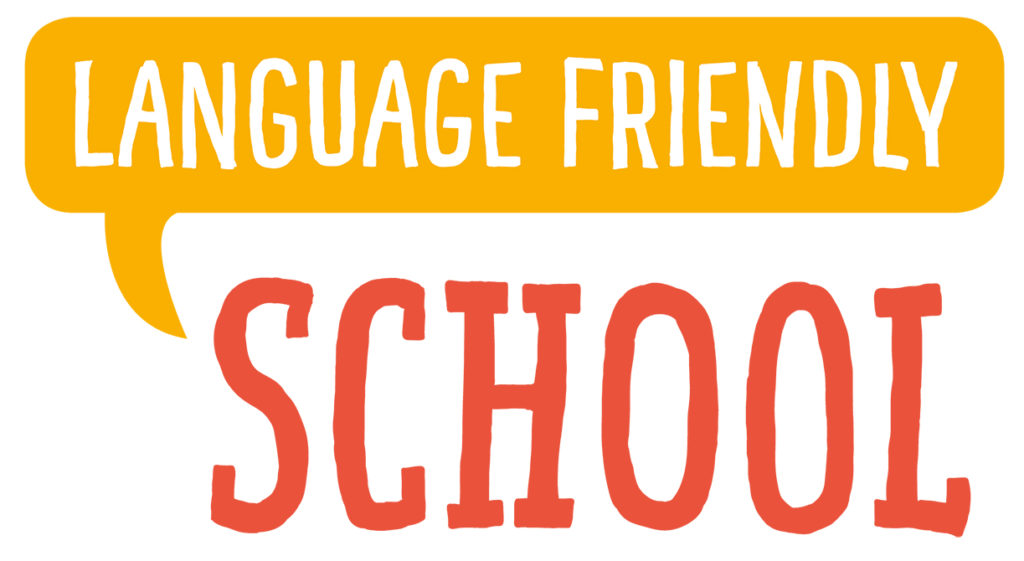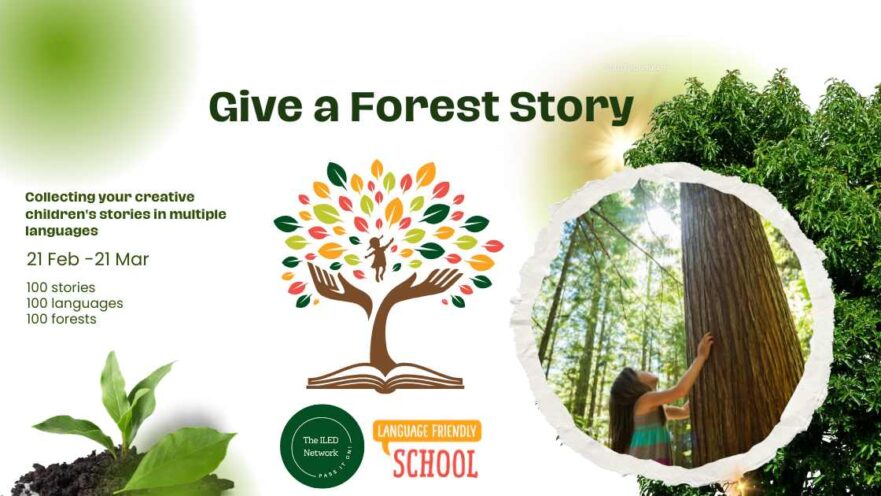100 stories, 100 languages, 100 forests
To mark the 25th anniversary of Mother Language Day and the 5th Anniversary of the Language Friendly School, the Rutu Foundation invites you (teacher, student, parent, child, teenager, sibling, everyone!) to participate in a month-long campaign titled “Give a forest story” The campaign will run from February 21st, International Mother Language Day, to March 21st, a date that unites both the International Day of Forests and the date of Elimination of Racial Discrimination.
Our goal is to collect 100 stories about forests from around the world for children in as many languages as possible, all accompanied by translations to ensure they reach children globally. This initiative encourages both children and adults to exercise their creativity, explore their connection to forests, understand different cultural perspectives on nature, and share their stories with others while also enjoying tales from peers across the globe. With this campaign, we want to raise awareness about the well-being of children and young people, especially students who speak a language other than the school language. The climate crisis, social media addiction, and discrimination based on language, dialect, or accent—our children are growing up in challenging times. So let’s support them with a story.
How can I participate?
Anyone can donate a story—a maximum of 500 words, in your preferred language, for children, about the forest – any forest, here. They can be old folk tales that you give a new twist to or something that happened to you in a forest. You can be as creative as you like. Find more specific information about how and where to submit your story here, and consult examples here.
On March 21st, we will close the campaign by releasing a selection of stories and providing access to all submitted stories. We will also encourage you to take on one final activity: forest walks!
The power of stories
Stories play a very important role in children’s brain development of social skills and language learning. Neuroscientists have found that when children hear stories, their brains light up in ways that go beyond language processing. Descriptive words can activate sensory areas, making them feel as if they are smelling, touching, or experiencing what’s being described. Reading stories also helps children understand emotions and relationships. Following a character’s journey, they practice imagining other people’s thoughts and feelings. This strengthens their ability to empathize and connect with others in real life. Research also suggests that children who read often better understand emotions and navigate social situations. Shared storytelling encourages conversations, curiosity, and deeper thinking.
Storytelling also helps develop creativity. It reflects the storyteller’s vision, what stands out to them, and what message they want to share. This process encourages children to explore ideas, express themselves, and invent their narratives.
So, what if we used stories to tackle some of the most pressing issues today, that deeply affect children’s futures?
Why forest stories?
At the Rutu Foundation, we work with children worldwide through the Language Friendly School and the Indigenous-led Education Network. Through our work, we have developed a deep understanding of the need for and the great benefits of children accessing education that respects their cultural identity including their languages. Both in the global north and the global south, this right is systematically violated, causing children to struggle to adapt to new countries or lose their cultural identity. In schools where the use of mother tongues is prohibited or punished, students have more feelings of shame or insecurity and perform worse on numeracy and reading tests. For Indigenous children, not being taught in their language has detrimental effects not only in communities but also on the environment, as Indigenous languages are inseparable from their knowledge systems, rich in environmental knowledge that makes them the world’s best conservationists.
Forests are the world’s most critical ecosystems that can be found in every single continent and are also under threat. Languages, cultures, and knowledge are deeply interconnected, forming what is known as biocultural diversity. Language serves as a vessel for transmitting traditional knowledge, including ecological and environmental understanding, from generation to generation. This knowledge, often developed over centuries, allows communities—especially Indigenous Peoples and local groups—to live sustainably within their specific environments. Cultural diversity is reflected in the thousands of languages spoken worldwide, many of which encode unique ways of understanding and interacting with nature. However, as languages disappear due to colonization, globalization, and socio-economic pressures, the traditional ecological knowledge they hold also vanishes. This loss threatens not only cultural heritage but also biodiversity. As a result, preserving languages is not just about preserving cultural identity—it is also needed to protect ecosystems and biodiversity.
Our call to action: give a forest story!
By writing stories about forests in a wide range of languages, each reflecting unique cultures and perspectives, we can engage children in ways that facts and figures alone cannot. So, what’s your forest story? Whether it’s a childhood memory, a retelling of a folktale, or an entirely new adventure, we invite you to add your voice to this growing collection. Submit your story today and be part of a movement that celebrates storytelling, language, and nature.
📅 Deadline: March 21st
✨ How to submit: Instructions
🌳 Where to submit: https://forms.gle/kMxuQVJ41wBF95Zd7

